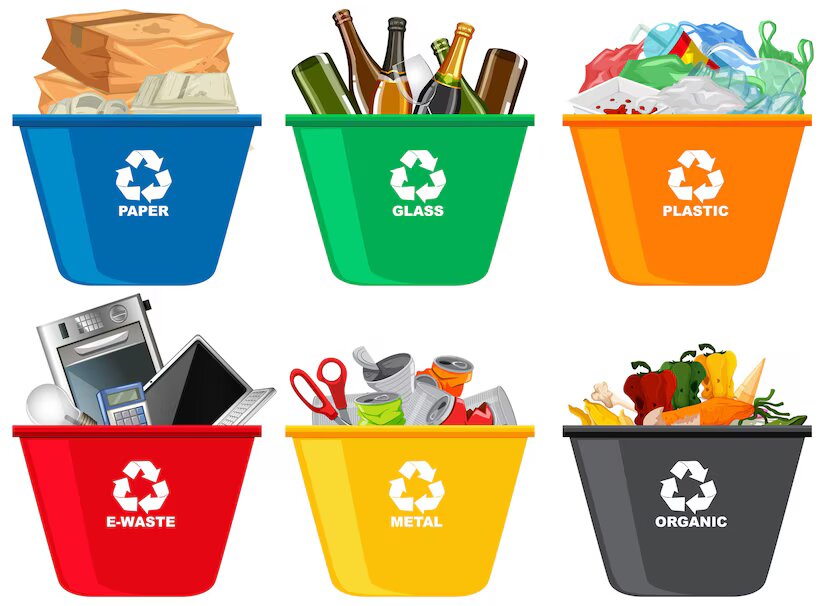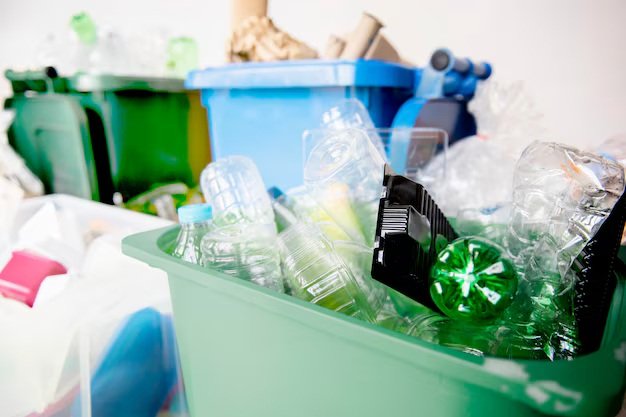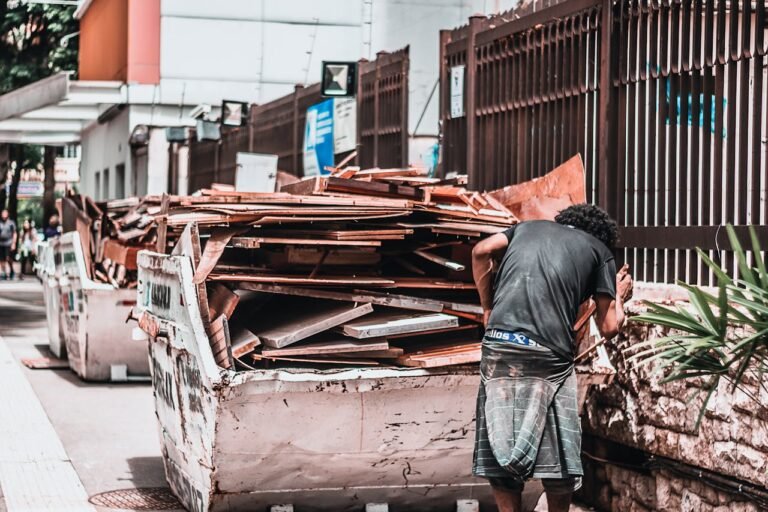Recycling Bin Colours and Their Meanings: A Comprehensive Guide
Let’s face it, when we think of recycling bins, we might picture something mundane—just a plastic container sitting in the corner, waiting for our empty bottles and papers. But these humble bins are doing something extraordinary: they’re helping us take better care of the planet. By understanding what the different colours of recycling bins mean, we can do our part to cut down on landfill waste, save valuable resources, and create a cleaner, healthier world for future generations.
This guide is here to break it all down in a simple, practical way. It’s based on real-life examples, expert advice, and proven strategies that anyone can follow. Together, we’ll explore how something as small as sorting your trash into the right bin can have a huge impact.

In This Article
- Why Recycling Bins Are So Important
- Common Recycling Bin Colours and Their Meanings
- Overcoming Challenges in Recycling
- Actionable Advice for Better Recycling Practices
- Conclusion
Why Recycling Bins Are So Important
Think of recycling bins as the first step in giving old materials a new life. They’re not just for collecting waste—they’re part of a much bigger system that turns what we throw away into something useful again. Whether it’s turning food scraps into compost for gardens or recycling old newspapers into new paper, every item we sort properly can help reduce the strain on landfills and save resources like trees, water, and energy.
And here’s the thing: the colours of the bins make it all so much easier. Each colour represents a specific type of waste, like paper, glass, or organic materials. This colour-coding system is a simple but powerful way to remind us of what goes where. Plus, it helps raise awareness about recycling in our communities. When we all stick to the system, it’s easier to recycle and compost efficiently, and that’s a win for everyone.
A Small Effort That Adds Up
Using recycling bins the right way isn’t hard, but it does require a little bit of effort. The good news? That effort pays off in a big way. By sorting your waste correctly, you’re helping to keep recyclable materials out of landfills, where they would otherwise take years to break down. You’re also making it easier for recycling facilities to process waste efficiently, turning it into new products that we can use again and again.
Recycling isn’t just a chore—it’s a small but powerful way to show that we care about the planet. So let’s roll up our sleeves, learn the colours, and start making a difference, one bin at a time.
Common Recycling Bin Colours and Their Meanings
While bin colours vary across regions, their purpose remains consistent: to facilitate proper waste segregation. Below, we delve into the common colours and their respective uses.
1. Blue Bin: Paper and Cardboard Recycling
What Goes in a Blue Bin?
The blue bin is your go-to for all things paper and cardboard. Think of the stacks of old newspapers, magazines that have outlived their trendiness, empty cereal boxes, and those mountains of Amazon delivery boxes piling up in the corner. Office paper, too, finds a second life here. If it’s paper and no longer useful, the blue bin welcomes it.
Why It Matters
The paper is incredible. Did you know it can be recycled up to seven times before the fibres break down? Every time you toss that old notebook or cereal box into the blue bin, you’re reducing the need for new trees to be cut down. Recycling paper also saves water and energy. According to the Environmental Paper Network, recycling just one ton of paper saves 7,000 gallons of water, 380 gallons of oil, and prevents 60 pounds of air pollution.
Regional Variations
Here’s a heads-up: not every blue bin is used strictly for paper. In some places, you might be asked to toss in plastics and metals as well. Always double-check your local recycling rules. It only takes a moment, but it makes a huge difference.
Seattle’s Case Study
In 2023, households in Seattle that diligently used blue bins saw an 18% reduction in general waste. That’s 18% less garbage sitting in landfills. It’s proof that a little effort in sorting can have a massive impact. One family shared how teaching their kids to recycle paper turned into a fun household activity—and a chance to discuss sustainability over dinner.
Learn More: Recycling vs. Upcycling: Key Differences
2. Green Bin: Organic Waste
What Belongs in the Green Bin?
The green bin is all about nature’s cycle. This is where you toss your food scraps, like banana peels, coffee grounds, eggshells, and yard trimmings—basically anything that can decompose and return to the soil.
Why It’s Important
When organic waste decomposes in landfills, it releases methane, a potent greenhouse gas. But when composted, it turns into nutrient-rich material that can help gardens thrive. Composting is nature’s way of recycling, and using a green bin ensures the process happens efficiently.
The San Francisco Example
San Francisco made green bins mandatory for composting in 2009, and the results have been extraordinary. They’ve managed to divert 80% of waste from landfills, making it one of the most sustainable cities globally. Local gardeners rave about the city’s compost program, which provides nutrient-rich soil for free.
Pro Tip: Avoid putting plastics or metals into the green bin. Even tiny amounts of contamination can ruin an entire batch of compost.
3. Yellow Bin: Plastics and Metals
What’s a Yellow Bin For?
Think of the yellow bin as a magnet for plastics and metals. That’s where your aluminium soda cans, PET water bottles, steel food tins, and plastic containers go. The key is that these items are clean and empty.
Why Cleanliness Matters
Imagine opening a bin filled with unwashed yoghurt containers. Yuck, right? Dirty plastics and metals can attract pests and cause odours. But more importantly, contamination can result in entire batches of recyclables being sent to landfills. Always rinse out food containers before tossing them in.
Expert Insight
Dr. Lisa Brown, a waste management expert, explains, “Segregating plastics and metals correctly ensures they’re recycled efficiently. Contamination is one of the biggest barriers to effective recycling.” A clean yellow bin means a more sustainable planet.
4. Red Bin: Hazardous and E-Waste
What Goes in a Red Bin?
This is the bin for items that need special care: batteries, old phones, leftover paint, and other hazardous materials. Electronic waste (e-waste) is especially crucial to recycle properly, as it contains toxic substances like lead and mercury.
Why Proper Disposal Is Vital
Improper disposal of hazardous waste can leach harmful chemicals into the soil and water, affecting ecosystems and human health. Red bins are a safe way to ensure these items are handled correctly.
Special Collection Days
Many municipalities organise e-waste collection days, where you can drop off items like old laptops, TVs, and smartphones. These events make it easy to do the right thing.
Hazardous Waste Breakdown
| Item | Hazardous Component |
|---|---|
| Batteries | Lead, cadmium, mercury |
| Paint | Volatile organic compounds |
| Old Phones | Lithium-ion batteries |
5. White Bin: Soft Plastics
What Belongs Here?
Soft plastics like grocery bags, bubble wrap, and food packaging materials go into the white bin. These are items that crumple easily and aren’t as rigid as regular plastics.
Challenges of Recycling Soft Plastics
Soft plastics require specialised facilities because they’re light and tend to clog traditional recycling machinery. That’s why they’re collected separately.
Australia’s REDcycle Program
Since its start, Australia’s REDcycle program has recycled over 1 billion soft plastic items, showing what’s possible when communities rally around a cause. Shoppers are now accustomed to dropping off their soft plastics at participating supermarkets.
6. Black Bin: Non-Recyclable Waste
What Goes in a Black Bin?
The black bin is for items that don’t have a second life—diapers, sanitary pads, medical waste, and other non-recyclables. It’s the last stop for waste that can’t be composted or recycled.
Important Notes
Always double-check to ensure hazardous items like batteries or electronics don’t end up in the black bin. These need to go into specialised bins like red bins.
Room for Improvement
A UK study in 2022 found that over 30% of items in black bins could have been recycled. This highlights the need for better education on what belongs where.
7. Grey Bin: General Waste or Dry Recyclables
What’s a Grey Bin For?
In some places, grey bins are for general waste. In others, they’re used for specific recyclables like cans or paper. It varies widely, so always check your local guidelines.
A Quick Tip
If you’re unsure, a quick search on your council’s website can clear up any confusion. It’s a small step that makes a big difference.
Learn More: Why Is Recycling Glass Important to the Environment?
8. Purple Bin: Glass Recycling
What Belongs in a Purple Bin?
The purple bin is for glass bottles, jars, and similar items. It’s perfect for those empty wine bottles and jam jars cluttering your kitchen.
What to Avoid
Items like Pyrex, light bulbs, and ceramics don’t belong in purple bins. These materials require separate recycling processes.
Success in Glasgow
Since Glasgow introduced purple bins in 2020, glass recycling rates have jumped by 40%. Residents say the clear, simple system makes it easier to do their part.
Overcoming Challenges in Recycling
Recycling sounds simple, doesn’t it? Just separate your waste, toss it into the right bin, and let the system do the rest. But if you’ve ever stood in front of a row of bins wondering where your takeaway coffee cup goes, you know it’s not always that straightforward. Let’s break down some common hurdles and how we can tackle them together.
1. Contamination
This is a big one. Contamination happens when non-recyclable items end up in the wrong bin. Think greasy pizza boxes or plastic bags mixed in with paper recyclables. Unfortunately, even a small amount of contamination can mean the whole batch gets sent to the landfill instead of being recycled. That’s heartbreaking for everyone involved. Following the colour-coded bin system can help a lot here. Just take a moment to double-check what goes where. It’s a small habit that makes a huge difference.
2. Regional Variations
Ever moved to a new city and felt completely lost about their recycling rules? You’re not alone. Different areas have different systems, and it’s not always easy to keep up. This confusion often leads to mistakes and frustration. Local governments could make things easier by running clear, regular education campaigns. Imagine getting a friendly, easy-to-read guide in your mailbox explaining your local recycling system. That would clear up a lot of the confusion, wouldn’t it?
3. Lack of Access
Sadly, not everyone has access to good recycling facilities. In rural or underserved areas, people might not even have the option to recycle properly. Fixing this requires better infrastructure, like more collection points or curbside pick-up services. Incentives, like discounts for bringing in recyclables, can also encourage participation. Everyone deserves the chance to recycle easily, no matter where they live.
Recycling isn’t perfect, but it’s something we can all work on. Together, we can turn these challenges into opportunities for a cleaner, greener future.
Actionable Advice for Better Recycling Practices
1. Know Your Local Guidelines
Every community has its own set of rules for recycling. Some places accept glass, while others don’t. Plastics might need to be sorted by number, or certain items might go in separate bins. Take a few minutes to look up your local recycling guidelines. Trust me, it’s worth it. This small step ensures you’re not accidentally tossing something that could contaminate the entire batch of recyclables.
2. Clean Before You Recycle
Let’s face it—no one wants a sticky mess. Before you toss that yoghurt cup or soda bottle in the bin, give it a quick rinse. It doesn’t have to be spotless, but removing leftover food or liquid helps prevent odours and keeps recycling facilities running smoothly. Plus, clean items are far more likely to be accepted for recycling.
3. Avoid Wishcycling
Have you ever thrown something in the recycling bin, hoping it could be recycled? That’s called wishcycling, and it does more harm than good. Non-recyclable items can contaminate entire loads, meaning all of it might end up in the landfill. When in doubt, check first or leave it out. It’s better to recycle correctly than to risk derailing the process.
4. Spread Awareness
Recycling is a team effort. Talk to your friends, family, and coworkers about what you’ve learned. Share tips on social media or put up a simple guide at home or in the office. The more people who understand how to recycle properly, the greater the collective impact we can make.
5. Advocate for Better Policies
Recycling systems aren’t perfect, and sometimes they need a push to improve. Support initiatives in your community that aim to expand recycling programs or make them more accessible. Write to your local representatives or participate in community meetings to voice your support for better waste management policies. Small actions can lead to big changes.
By following these steps, you’re not just recycling—you’re making a conscious effort to care for our planet. Every clean container, every informed choice, and every conversation helps build a sustainable future for all of us.
Conclusion
Understanding recycling bin colours and their meanings is a simple yet powerful way to contribute to environmental sustainability. By sorting waste correctly, we can reduce landfill use, conserve natural resources, and support a healthier planet. Let’s embrace this responsibility and inspire others to do the same. Together, we can make a lasting impact.







